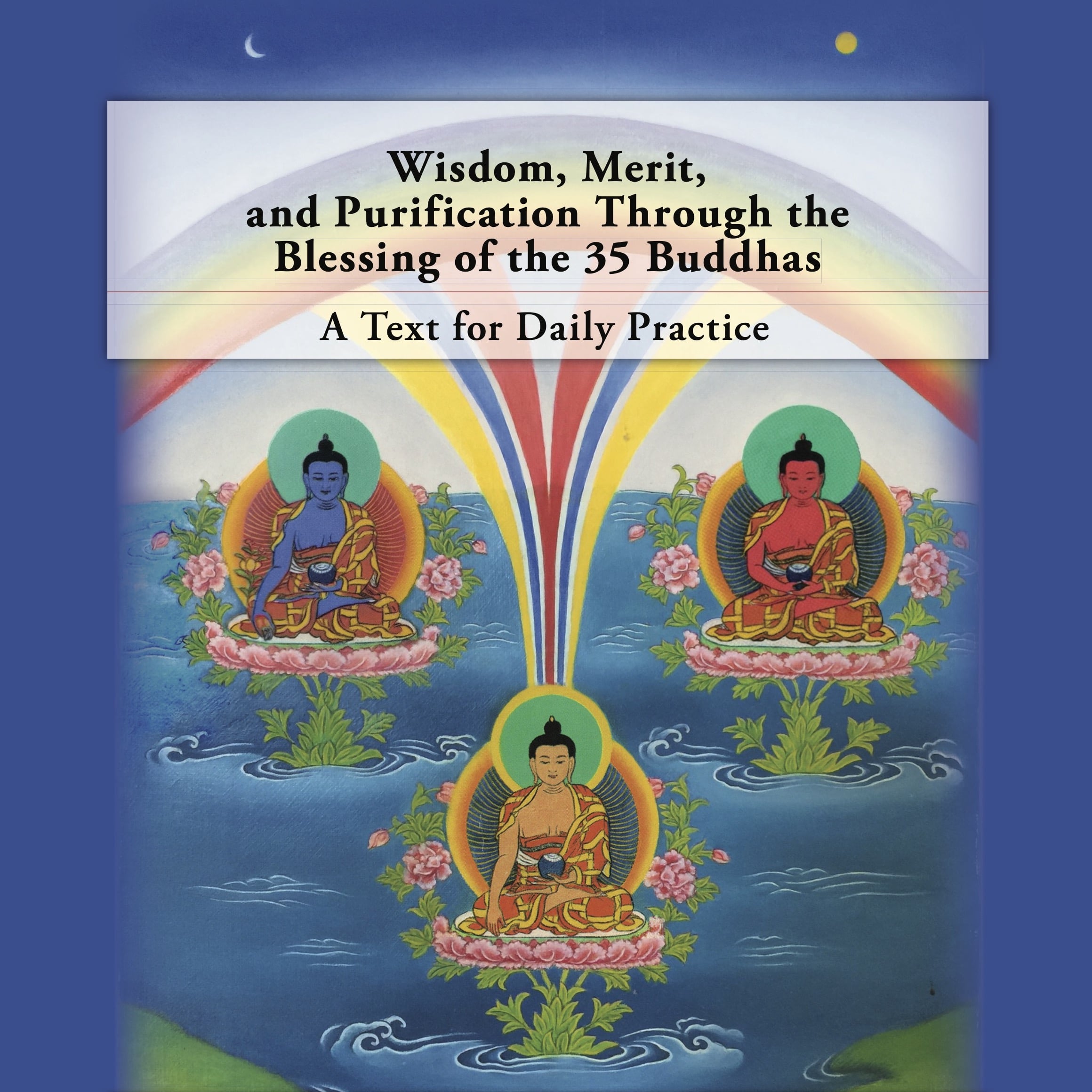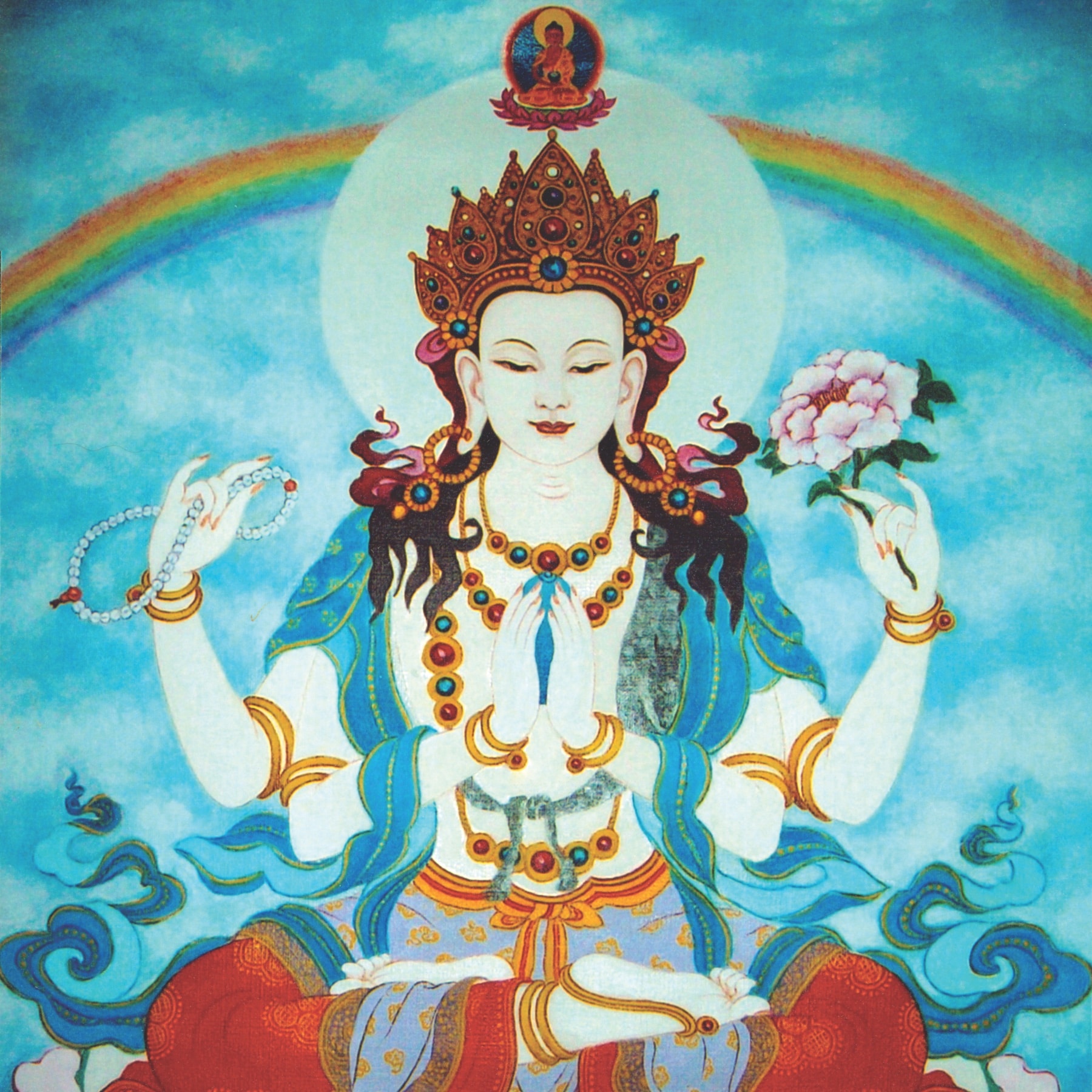
Core Practices
Bodhi Path emphasizes the practice of calm-abiding meditation (shamatha) to develop mental peace, stability, and focus and insight meditation (vipasyana) to examine and experience mind’s true nature, free of confusion and veils.
At the root of the Bodhi Path system of practice are the teachings of lojong, or Mind Training. Lojong teachings function to profoundly transform the practitioner’s mind by training it in the practice of compassion and the development of wisdom. Both practical and profound, these teachings are particularly suited to lay practitioners in the contemporary world.
Additional meditative practices help to cultivate wisdom, merit, purification, and compassion and include the Practice of 35 Buddhas (Three Heaps Sutra), the Practice of the Bodhisattva Avalokiteśvara (Chenrezig), Samatabhadra’s Aspiration Prayer (Sangcho Monlam), the Practice of Vajrasattva (Dorje Sempa), and others. With the personal guidance of a qualified master, students who have completed sufficient training may engage in additional Lineage Practices.

Core Practices
Bodhi Path offers training in a series of Buddhist practices as part of its Curriculum for Practice and Study. Resident and visiting teachers, both lay and monastic, provide training in these practices at Bodhi Path centers on a regular basis. Brief descriptions of the main practices, along with supporting resources, are provided here for reference.

Calm Abiding and Insight Meditation
The foundation of Mind Training is calm-abiding meditation (Tibetan: shiné , Sanskrit: shamatha) which helps develop mental peace, stability, and focus. With a calm mind comes the ability to practice insight meditation (Tibetan: lhaktong, Sanskrit: vipasyana), which involves analysis of mind’s true nature.
Through these practices of calm-abiding and insight we can remove the veils of ignorance and confusion which prevent us from experiencing the peace and clarity that is already present within our minds.

Practice of the 35 Buddhas
The 35 Buddhas Sutra, also called the Daily Confession in Three Sets, or Arya Triskandhaka Sutra, is particularly timely for today’s practitioners. The Buddha himself taught it in Shravasti. A pure, authentic, and non-sectarian transmission, it is unsullied by controversy or partisanship on any level. A vehicle of great blessing, it is appropriate for beginning and advanced practitioners alike. For these reasons and more, Shamar Rinpoche chose to revive this precious practice and make it a standard in Bodhi Path centers throughout the world. It is an appropriate starting point for all of the different paths followed at Bodhi Path, which are suited to the needs and inspiration of different practitioners. English translation is provided.

Practice of Chenrezig (Avalokiteśvara)
The meditation-recitation of four-armed Chenrezig sadhana was translated into English under Shamar Rinpoche’s guidance for Bodhi Path practitioners, along with accompanying commentary. The Practice Text, Extending Throughout Space for the Benefit of Beings, is by Tangtong Gyalpo, and the Commentary, Continual Rain for the Benefit of Beings, is by Khakyab Dorje, the 15th Karmapa. As Shamar Rinpoche advises, “Though it is quite accessible and easy to follow, this concise form of the Chenrezig meditation-recitation can ultimately lead to the same deep realization and results as far more elaborate Chenrezig practices.”

Practice of the Bodhisattva Wish
Bodhi Path practitioners may be introduced to Sangcho Monlam Samantabhadra’s Aspiration Prayer, practiced according to the commentary on the Wishing Prayer of the Arya Samantabhadra. Buddha Shakyamuni gave the teaching of the Samantabhadra Wishing Prayer to urge practitioners to treat the great Bodhisattva Samantabhadra as a role model to emulate so that all their wishes may be accomplished.
According to Shamar Rinpoche’s practice advice, “Once we accept that ‘our world’ is merely a mental experience, notions of big and small do not apply anymore, and our mind can hold any number of these manifestations. It is this capacity of our mind to extend itself beyond any limit that we have to use for our practice.” –Shamar Rinpoche, Teaching in Bodh Gaya, 2009

Practice of Dorje Sempa (Vajrasattva)
As appropriate, practitioners may be introduced to Dorje Sempa (Tib.) or Vajrasattva (Skt.) meditation and recitation practice under the guidance of a Bodhi Path teacher.

Lineage Practices
As appropriate, practitioners may be introduced to lineage practices requiring advanced training and individual guidance from a qualified master.

